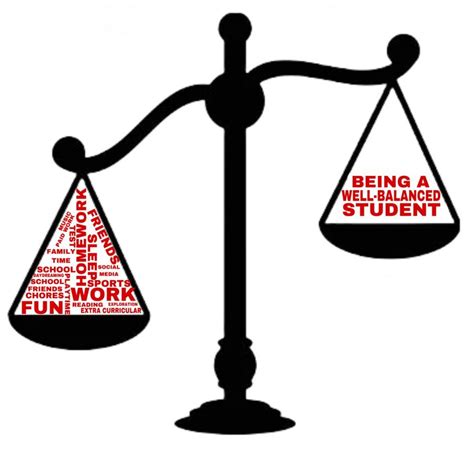Navigating the Demands of Education and Employment Concurrently

Introduction
Balancing the responsibilities of being a full-time student and a full-time employee can be a daunting task. However, with careful planning and effective time management, it is possible to succeed in both endeavors. This comprehensive guide will provide students with proven strategies, invaluable tips, and inspiring success stories to help them thrive in this challenging yet rewarding pursuit.
1. Time Management: The Key to Success
Effective time management is crucial for success as a full-time student who also works full-time. Here are some key strategies:
- Create a Realistic Schedule: Plan your schedule meticulously, allocating specific time slots for studying, working, and personal activities. Stick to the schedule as much as possible to avoid overcommitting and feeling overwhelmed.
- Prioritize Tasks: Learn to distinguish between essential and non-essential tasks. Focus on completing the most important tasks first, and delegate or eliminate less critical tasks when necessary.
- Utilize Technology: Leverage technology to enhance your productivity. Use calendar apps, task management tools, and online resources to stay organized and on track.
2. Study Strategies: Maximizing Learning Efficiency
Studying as a full-time employee requires efficient and effective strategies:
- Active Recall: Engage in active recall by regularly testing yourself on the material you have learned. Use flashcards, practice questions, or teach the material to someone else to enhance retention.
- Spaced Repetition: Review the material at increasing intervals to strengthen your memory. This technique helps reduce forgetting and improves long-term recall.
- Utilize Breaks: Take short breaks throughout your study sessions to refresh your mind and improve focus. Use these breaks to move around, stretch, or engage in brief mental activities.
3. Work-Life Balance: Maintaining Well-being
Maintaining a healthy work-life balance is essential for both physical and mental well-being. Here are some tips:
- Set Boundaries: Establish clear boundaries between work and personal time. Avoid checking work emails or taking calls outside of designated work hours.
- Prioritize Sleep: Aim for 7-9 hours of quality sleep each night. Sufficient sleep is crucial for maintaining focus, energy levels, and overall health.
- Exercise Regularly: Engage in regular physical activity to reduce stress, improve mood, and enhance cognitive function.
- Connect with Others: Make time to connect with friends, family, or a support group to build a network and de-stress.
4. Financial Management: Budgeting and Savings
Managing finances effectively is crucial when balancing work and school:
- Create a Budget: Track your income and expenses meticulously to ensure you are living within your means. Prioritize essential expenses and identify areas where you can save.
- Maximize Tax Benefits: Take advantage of tax deductions and credits for educational expenses, student loan interest, and transportation costs.
- Explore Financial Aid: Research financial aid opportunities, such as scholarships, grants, and student loans, to supplement your income.
5. Emotional Intelligence: Coping with Stress
Managing the emotional demands of being a full-time student and employee requires high levels of emotional intelligence:
- Identify Stressors: Identify the specific situations or tasks that trigger stress. Understanding the sources of stress helps you develop coping mechanisms.
- Practice Self-Care: Engage in activities that promote relaxation and well-being, such as meditation, yoga, or spending time in nature.
- Seek Support: Don’t hesitate to reach out to friends, family, or a mental health professional if you are feeling overwhelmed or struggling to cope.
Success Stories: Inspirational Tales
Numerous individuals have successfully navigated the challenges of being a full-time student and a full-time employee. Here are a few inspiring success stories:
- Sarah, a single mother: Sarah worked full-time as a nurse while completing her bachelor’s degree in nursing. Despite the demanding workload, she excelled academically and graduated with honors.
- John, a recent graduate: John worked full-time as a software engineer while pursuing his master’s degree in computer science. He attributed his success to effective time management and the support of his employer, who provided flexible work arrangements.
- Maria, a career changer: Maria worked full-time in retail management while completing a certification program in accounting. She successfully transitioned to a new career in finance, demonstrating the power of education and perseverance.
Conclusion
Being a full-time student and a full-time employee can be a challenging but rewarding pursuit. By implementing the strategies outlined in this guide, including effective time management, efficient study techniques, work-life balance, financial management, and emotional intelligence, you can navigate this path successfully. Remember, with determination, perseverance, and a supportive network, you can achieve your academic and career goals while maintaining your well-being.
Additional Resources
- National Center for Education Statistics
- American Psychological Association
- National Alliance on Mental Illness
Tables
| Table 1: Benefits of Being a Full-Time Student and Full-Time Employee |
|—|—|
| Enhanced Employability | Increased Earning Potential |
| Practical Experience | Development of Transferable Skills |
| Career Advancement | Personal Growth and Fulfillment |
| Table 2: Time Management Strategies for Full-Time Students and Employees |
|—|—|
| Create a Realistic Schedule | Prioritize Tasks |
| Utilize Technology | Take Breaks |
| Plan Ahead | Delegate Responsibilities |
| Table 3: Coping Mechanisms for Stress Management |
|—|—|
| Identify Stressors | Practice Self-Care |
| Seek Support | Engage in Physical Activity |
| Prioritize Sleep | Delegate Tasks |
| Table 4: Financial Planning Tips for Full-Time Students and Employees |
|—|—|
| Create a Budget | Maximize Tax Benefits |
| Explore Financial Aid | Reduce Unnecessary Expenses |
| Consider Part-Time Income | Seek Employer Benefits |
